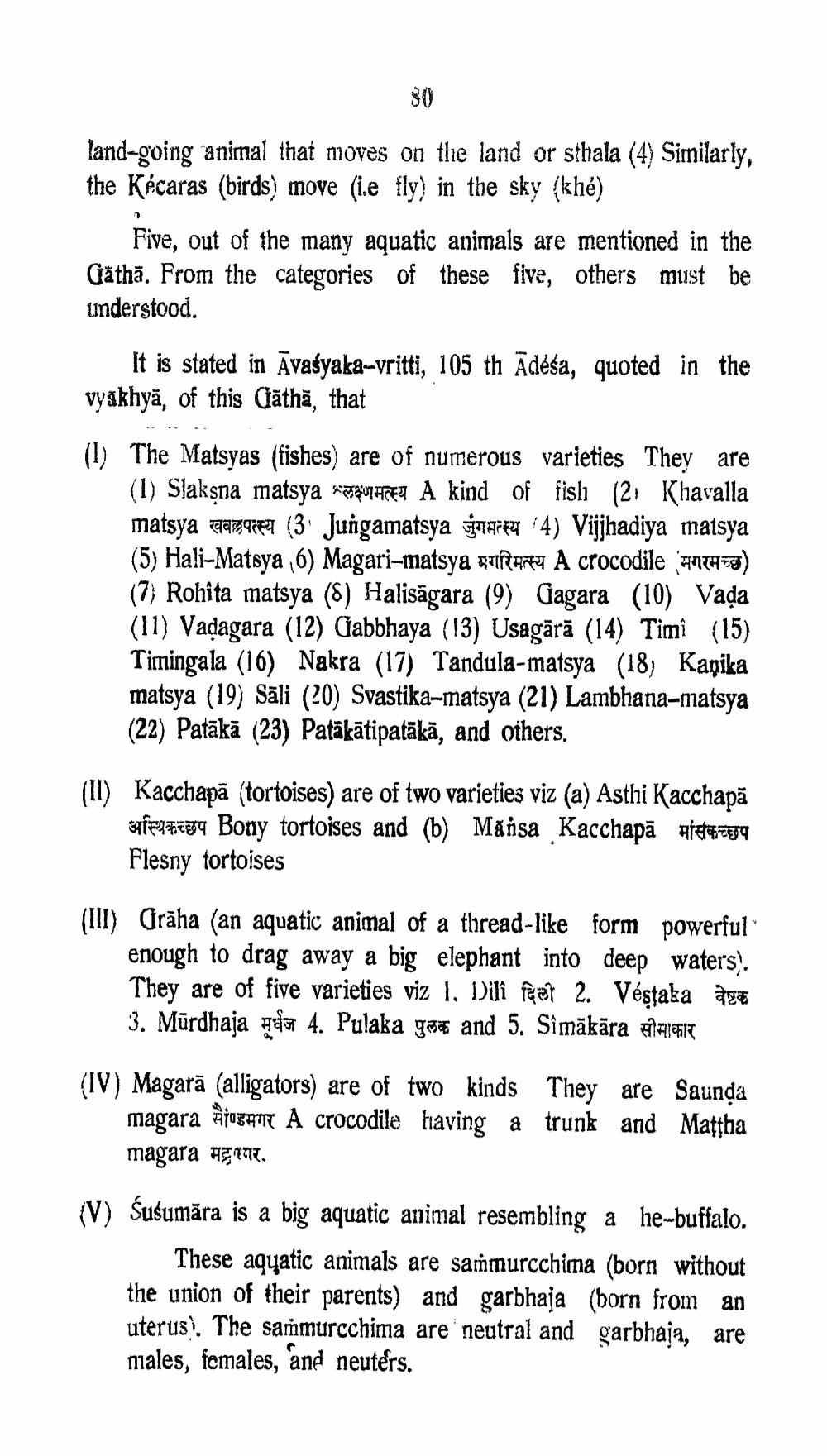________________
land-going animal that moves on the land or sthala (4) Similarly, the Kécaras (birds) move (i.e fly) in the sky (khé)
Five, out of the many aquatic animals are mentioned in the Gjäthā. From the categories of these five, others must be understood.
in
the
It is stated in Āvasyaka-vritti, 105 th Ādésa, quoted vyakhyä, of this Gāthā, that
(1) The Matsyas (fishes) are of numerous varieties They are
(1) Slaksna matsya <TRI PER A kind of fish (2. Khavalla matsya खवलपत्स्य (3. Jungamatsya जुंगमत्स्य 4) Vijjhadiya matsya (5) Hali-Matsya 6) Magari-matsya Rai AFI A crocodile F11THB) (7) Rohita matsya (8) Halisāgara (9) Gagara (10) Vaļa (11) Vadagara (12) Gabbhaya (13) Usagārā (14) Timî (15) Timingala (16) Nakra (17) Tandula-matsya (18) Kaņika matsya (19) Sāli (20) Svastika-matsya (21) Lambhana-matsya (22) Patākā (23) Patākātipatākā, and others.
(II) Kacchapā (tortoises) are of two varieties viz (a) Asthi Kacchapă
32ff17.739 Bony tortoises and (b) Maisa Kacchapā 147889 Flesny tortoises
(III) Grāha (an aquatic animal of a thread-like form powerful
enough to drag away a big elephant into deep waters). They are of five varieties viz 1. Dili feat 2. Véstaka 48% 3. Mūrdhaja gela 4. Pulaka gą and 5. Simākāra peit
(IV) Magarā (alligators) are of two kinds They are Saunda
magara #jogante A crocodile having a trunk and Mattha magara 45797.
(V) Šušumāra is a big aquatic animal resembling a he-buffalo.
These aquatic animals are sammurcchima (born without the union of their parents) and garbhaja (born from an uterus). The sammurcchima are neutral and garbhaja, are miales, females, and neuters.




